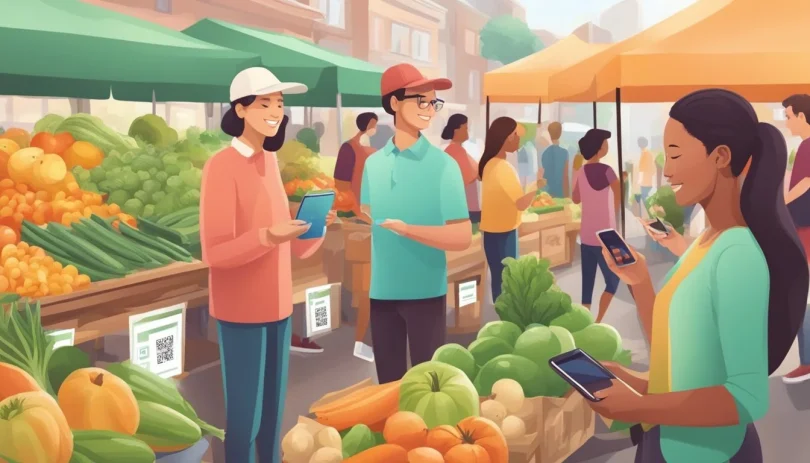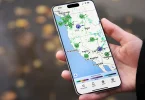vRunning a farmer’s market stand today is about more than just fresh produce and friendly smiles—it’s about mastering digital tools that help you sell faster, communicate clearly, and build lasting customer relationships. From payment processing to inventory tracking to social marketing, smart tech can make your farm-fresh hustle more profitable and less stressful.
Whether you’re selling heirloom tomatoes, handcrafted jams, or pasture-raised eggs, here are a few standout digital tools (plus a helpful FAQ) to help you thrive on market day—and every day after.
1. Square: Seamless Payments & Sales Tracking
Cash-only stands are fading fast, and tools like Square are leading the charge toward fast, flexible, and secure payment processing. With a free card reader and mobile-friendly app, Square makes it easy to accept debit, credit, and contactless payments, even in remote locations.
Beyond transactions, Square helps you track sales trends, manage taxes, and even send digital receipts. Their dashboard gives you real-time insight into which items sell best, helping you optimize your inventory and pricing. The app is free to use, with transaction fees on a per-sale basis—making it an affordable starting point for small vendors.
2. Barn2Door: Farm-Specific Ecommerce Tools
If you want to turn curious weekend shoppers into loyal year-round customers, Barn2Door can help. This platform is tailor-made for farmers, offering e-commerce solutions that integrate with local pickup, delivery, and subscription services.
Barn2Door lets you build a simple online store, promote your inventory, and even handle CSA memberships. It’s ideal for vendors looking to scale beyond one-day markets. Their mobile optimization makes it easy for customers to order after they’ve met you in person—no tech headaches required.
3. FarmDrop: Local Marketplace Expansion
FarmDrop is a community-focused tool that connects local farmers and food makers to nearby shoppers. It’s especially helpful for market vendors who want to reach people who can’t make it to the physical stand.
With FarmDrop, you can list your items for pre-order, helping reduce unsold inventory and streamline your prep. Customers shop online and pick up their order at your stand or another hub. It’s a hybrid approach that blends digital ease with in-person charm.
4. Google Sheets + TallySheet: Real-Time Inventory
Managing inventory can get messy—especially when things are selling fast. Use a simple Google Sheet (free and accessible from any device) paired with TallySheet, a market-day sales tracker built for farmers.
TallySheet makes it easy for you or a helper to log every sale with a few taps—no POS needed. It works offline, syncs later, and lets you tally totals by product. You can customize your product list to match the season, and even use the data to plan future harvests based on past demand.
5. Textedly: Stay Top of Mind With SMS Marketing
Email may get ignored, but text messages get read. Textedly lets you create SMS campaigns to keep customers informed about what’s fresh, what’s selling fast, and where your stand will be.
You can grow your list right at your stand with a simple sign directing customers to text your provided number. Then, use Textedly’s dashboard to send weekly updates, specials, or alerts for limited-time items. It’s direct, affordable, and surprisingly effective for building repeat business.
6. Instagram + Linktree: Show Off & Sell Smarter
Instagram is a natural fit for farmers’ market vendors—it’s visual, personal, and community-driven. But to make it work for sales, pair it with Linktree. This tool turns your bio into a mini landing page where you can link to your store, pre-order forms, CSA signups, and more.
Use Instagram to post morning-of harvest shots, behind-the-scenes stories, and customer shoutouts. Then, funnel interest through Linktree into your sales ecosystem. It’s a low-cost way to drive conversions from curiosity to cart.
🥕 FAQ: Smart Card Design for Farmer’s Market Success
At a busy farmer’s market, customized cards can serve many roles beyond just business branding. Whether you’re labeling products, managing orders, or collecting customer info, a well-designed card can save time, boost trust, and encourage repeat business. Here are five frequently asked questions to help you design cards that actually work for your stand:
Q1: How can I use customized cards beyond just handing out contact info?
Custom cards are surprisingly versatile. You can use small, folded cards to label your products, such as “Organic Roma Tomatoes – $3/lb – Pesticide Free.” Larger cards can serve as mini price sheets or CSA signup instructions. Place these next to your cash box or in a frame to answer common questions without needing to repeat yourself. Even a simple “Today’s Harvest” card with a list of what’s available can give your booth a more polished, trustworthy feel.
Q2: What tool can I use to design and print cards that serve multiple purposes?
A great option is to create a card to print using Adobe Express. It offers intuitive templates you can quickly adapt for product labels, signs, recipe cards, or even punch cards for loyal customers. You can design once, then print multiples for different uses. The drag-and-drop interface is easy even for non-designers, and the templates are clean and market-friendly.
Q3: Can I use cards to collect customer info or pre-orders at my stand?
Yes—info cards are a smart way to keep customers engaged after the sale. Consider printing small cards that say “Get on the List!” with spaces for name, phone number, and email. This is great for alerting customers about next week’s specials or limited seasonal offerings. You can also design pre-order cards for popular or fast-selling items (like holiday pies or canning tomatoes), helping you gauge demand before harvest.
Q4: What’s the benefit of using printed cards instead of just a whiteboard or handwritten signs?
While whiteboards are useful, printed cards convey consistency and professionalism—especially when you’re managing a lot of small items. Cards are easy to replicate, durable, and clean-looking. A printed price card looks more intentional than handwritten signs that may smudge or wear down by midday. Plus, you can reuse laminated cards week after week, saving time and presenting a unified look that customers associate with quality.
Q5: Are there tools or services that let me order high-quality cards quickly?
In addition to Adobe Express for design, you can print with services like Vistaprint or Moo, both of which offer fast turnaround and great pricing. Moo is ideal for vendors who want premium card finishes or thick card stock for outdoor use. Vistaprint is excellent for bulk orders—perfect if you’re making recipe cards to hand out with seasonal produce or designing a “Meet Your Farmer” card for kids and families.
Your farmer’s market stand is more than a pop-up—it’s a brand, a business, and a community hub. These digital tools help you run it like one. Start small, pick the right tools for your vibe, and let your tech do some of the heavy lifting while you focus on what you do best—growing, making, and connecting.





